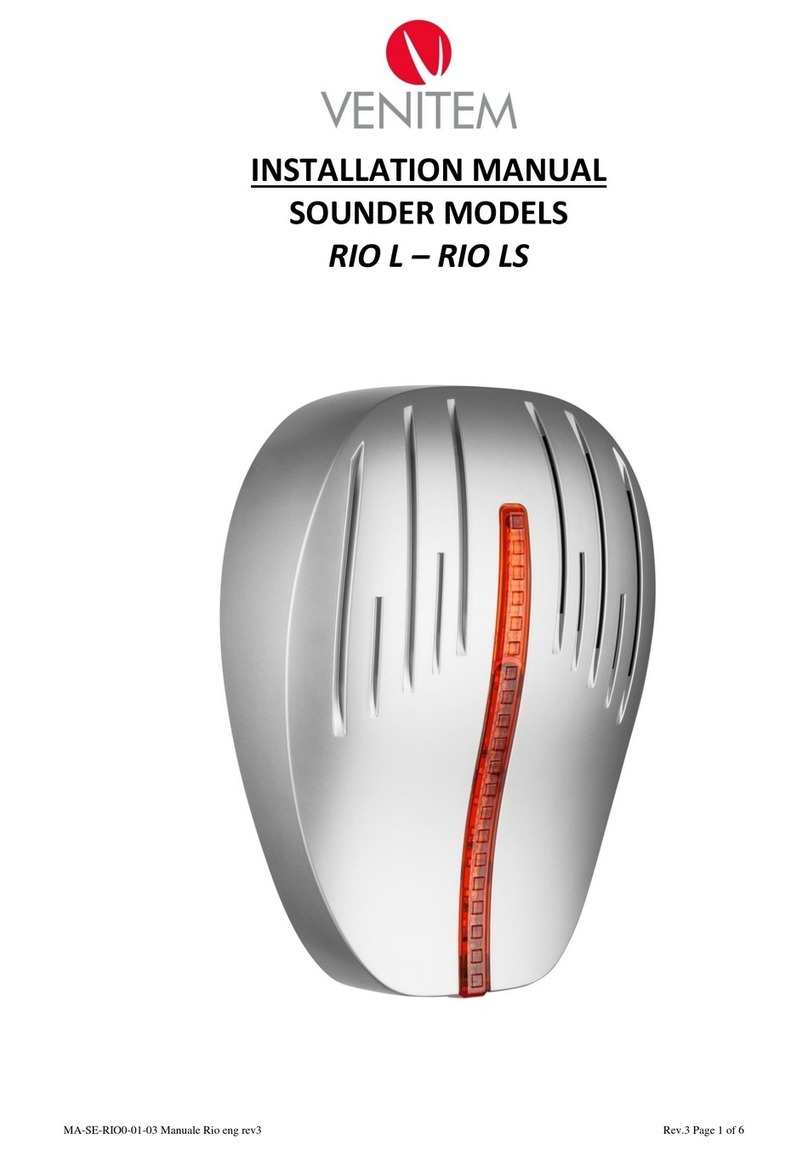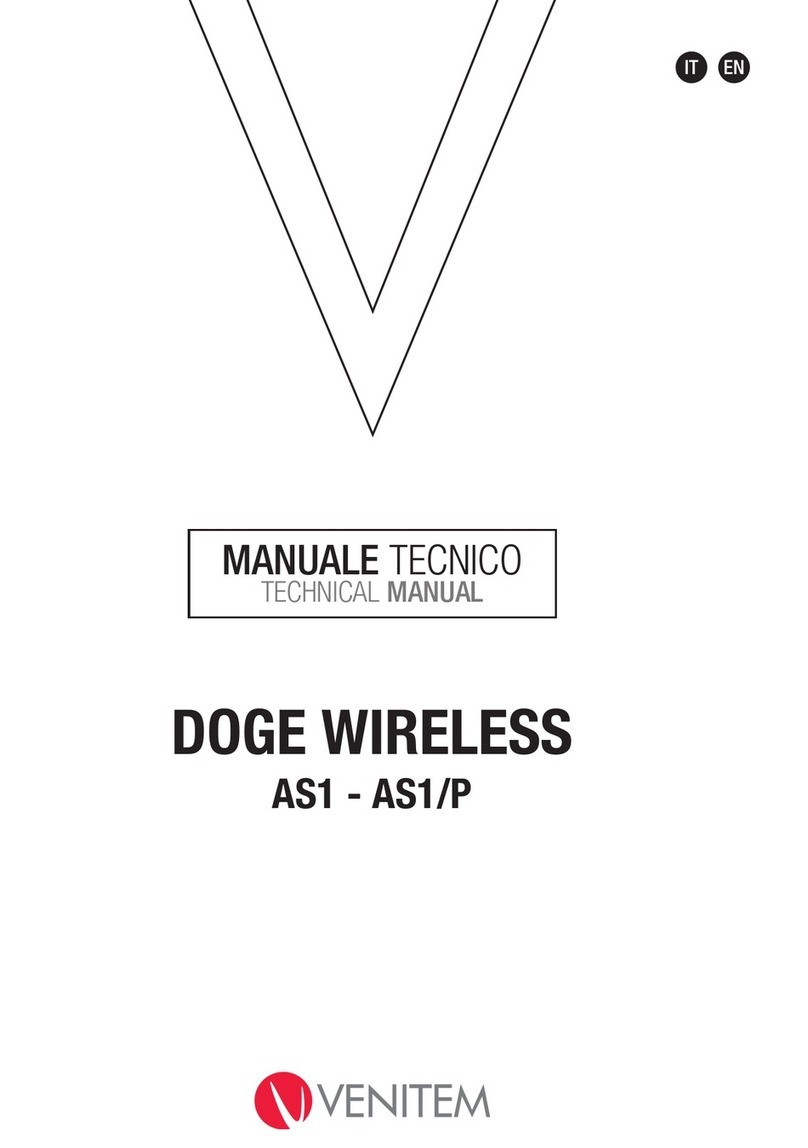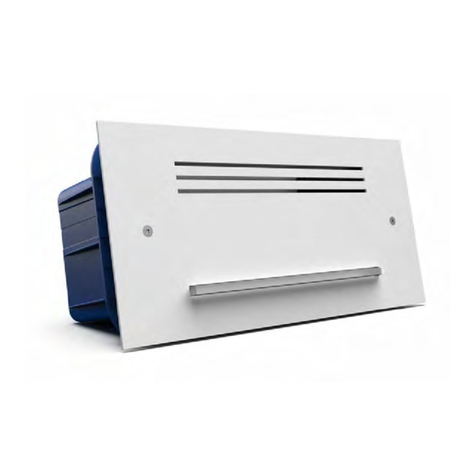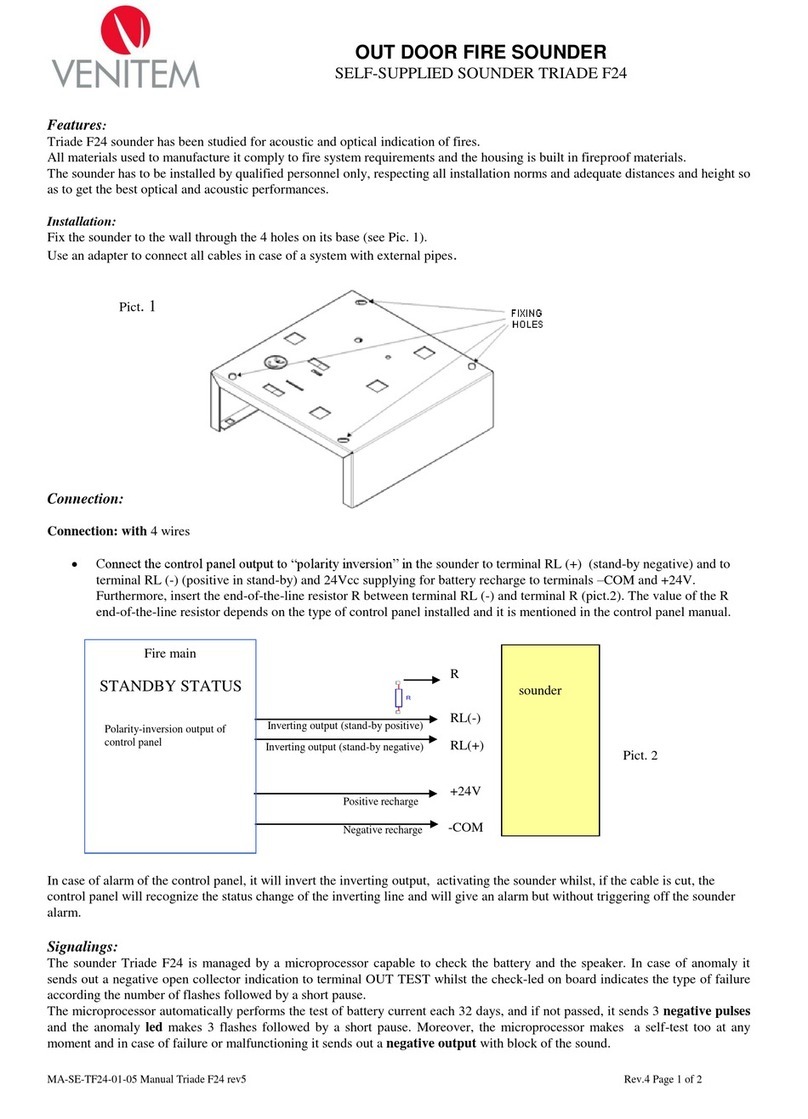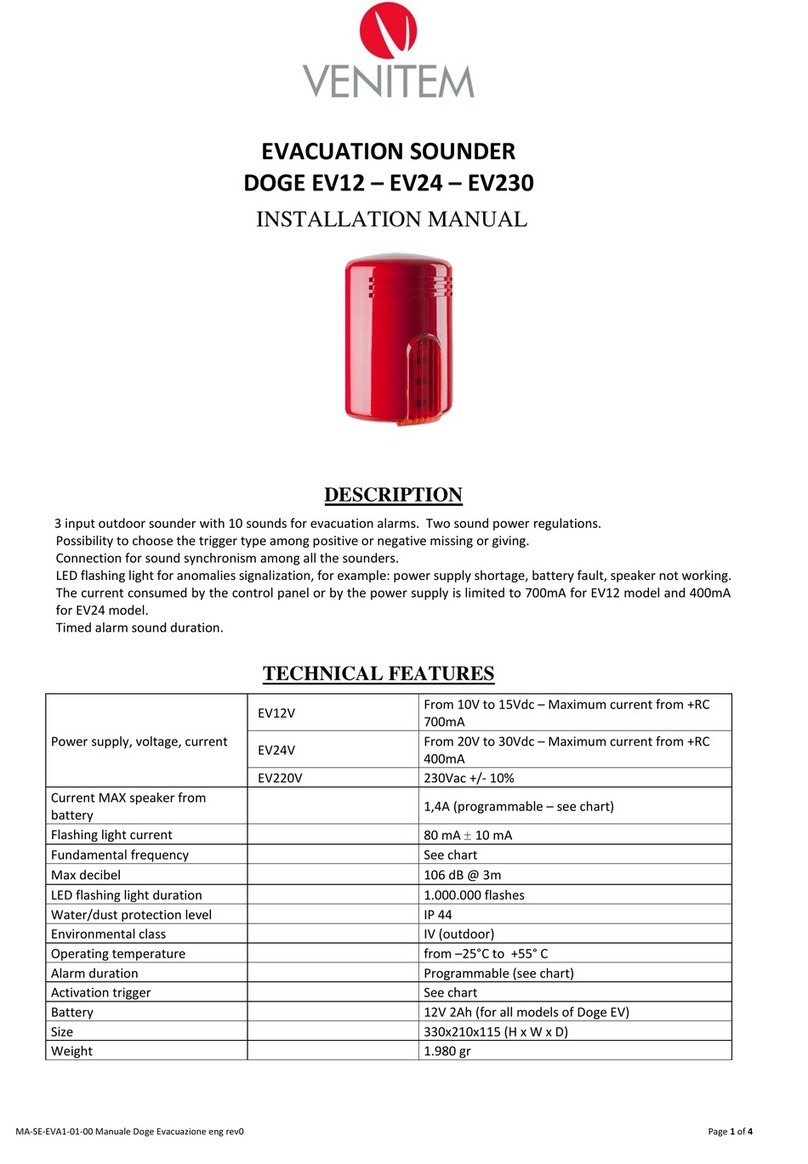
MANUALE TECNICO
9
SINCRONISMO
ANOMALIE
TAB. 8: ANOMALIE
Quando si usa il sincronismo è necessario impostare lo stesso suono e la stessa temporizzazione
dell’allarme su tutte le sirene per evitare malfunzionamenti.
Quando la tensione della batteria è inferiore a 9,5 Vcc la sirena non emette nessun suono e non
attiva il lampeggiante per evitare segnalazioni errate. Quando la batteria si riporta a 10,5 Vcc la
sirena riprende il funzionamento normale.
Alla prima alimentazione il lampeggiante accende i LED per segnalare l’alimentazione e
permettere la verifica del funzionamento del lampeggiante.
I LED di stato impianto lampeggiano solo se non ci sono anomalie, in caso contrario i due
LED non lampeggiano ed è necessario aprire la sirena per osservare il LED interno e contare
i lampeggi, vedi tabella 8. Il LED interno di segnalazione anomalie tiene memoria della prima
anomalia che viene riscontrata, la memoria è cancellata quando si attiva un allarme per
almeno un secondo. Questo permette all’installatore, nel caso di un’anomalia instabile come
una batteria guasta, di verificare cosa ha generato l’ anomalia anche se la causa è scomparsa.
Il lampeggiante della sirena mantiene la memoria (quindi non lampeggia) come il LED anomalie
eccetto per la mancanza rete che non viene memorizzata.
DIP 7 POLARITÀ
OFF Comando positivo (+12 Vcc o +24 Vcc)
ON Comando negativo (0 Vcc)
DIP 8 CAMBIAMENTO
OFF Comando a mancare
ON Comando a dare
ANOMALIE LED LD1 CONTATTO RELÈ
MORSETTI 3 E 4
Interruzione Speaker (test ogni 10 s) 1 LAMPEGGIO APERTO
Mancanza corrente di ricarica (V ricarica < 12 Vcc su
EV12 e EV230, V ricarica < 19 V su EV24) (test ogni 10 s) 2 LAMPEGGI APERTO
Batteria sconnessa (test ogni 4 ore) 3 LAMPEGGI APERTO
Batteria bassa tensione (V batteria < 10,5 Vcc)
(test ogni 10 s) 4 LAMPEGGI APERTO
Batteria deteriorata – resistenza superiore a 2,5 Ohm
(test ogni 4 ore) 5 LAMPEGGI APERTO
Nessuna anomalia OFF CHIUSO
TAB. 6: DIP 7 POLARITÀ COMANDO TAB. 7: DIP 8 TIPO DI COMANDO
Priorità suoni: Attenzione La priorità degli ingressi è (5), (7) e per ultimo (9).
Questo vuol dire che se tutti gli ingressi sono collegati contemporaneamente a 0 Vcc (con DIP
7 e DIP 8 ON) verrà generato il suono (5).

